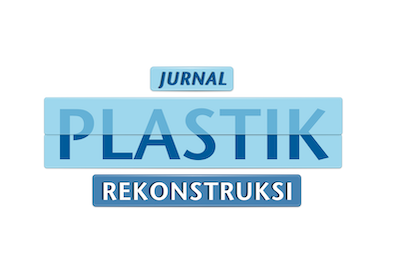Psychological Landscape of Children With Cleft Palate: A Comprehensive Review
DOI:
https://doi.org/10.14228/dy7abp85Keywords:
Cleft lip, Cleft palate, Psychological distress, Emotional well-being, Social functioning, Quality of lifeAbstract
Cleft lip and/or palate (CL/P) is a common congenital craniofacial abnormality with significant psychosocial implications. This review synthesizes recent research on the psychological landscape of children and adolescents with CL/P, emphasizing the impact on emotional well-being, social functioning, and quality of life. Psychological distress, including anxiety and lower self-esteem, is prevalent among individuals with CL/P, persisting into adulthood and influencing various aspects of mental health. While some studies suggest resilience or underreporting of psychological difficulties, others highlight enduring challenges in appearance satisfaction and emotional well-being. Factors such as familial support and satisfaction with appearance play crucial roles in positive adjustment. Social functioning and peer acceptance present significant challenges, with many children experiencing isolation and stigma. However, some demonstrate adaptive social behaviours, suggesting protective factors. Quality of life is adversely affected, emphasizing the need for holistic interventions addressing physical and psychosocial aspects. While treatments positively impact perceived quality of life, specific cleft types and comorbidities like obstructive sleep apnea further influence outcomes. Overall, understanding the multifaceted challenges of CL/P is essential for implementing targeted interventions and improving overall well-being. Further research is needed to assess the long-term effectiveness of interventions and identify novel approaches for enhancing mental health in this population.
References
1. H. Akelma, ETK Kılıc, CK Kaçar, O Uzundere, A Kaydu, E Gökçek. Accidental full thickness burns by super glue. Ann Med Health Sci Res. 2017;7:70-71.
2. Jamnadas-Khoda B, Khan MAA, Thomas GPL, Ghosh SJ. Histoacryl glue: A burning issue. Burns. 2011;37(1):e1-e3. doi:10.1016/j.burns.2010.09.005
3. Clarke TFE. Cyanoacrylate glue burn in a child – lessons to be learned. Journal of Plastic, Reconstructive & Aesthetic Surgery. 2011;64(7):e170-e173. doi:10.1016/j.bjps.2011.03.009
4. Clayman E, Billington A, Cruse C. Full-Thickness pediatric burn following reaction between cyanoacrylate nail adhesive and cotton shirt. J Cutan Aesthet Surg. 2020;13(1):35-37. doi:10.4103/JCAS.JCAS-64-19
5. Tang CL, Larkin G, Kumiponjera D, Rao GS. Vanity burns: An unusual case of chemical burn caused by nail glue. Burns. 2006;32(6):776-777. doi:10.1016/j.burns.2005.12.008
6. Pizzi A, Mittal KL. Handbook of Adhesive Technology. Marcel Dekker Inc; 2003.
7. Alhumsi TR, Shah Mardan QN. Burn Injury Due to Cyanoacrylate-Based Nail Glue: A Case Report and Literature Review. Cureus. Published online March 14, 2021. doi:10.7759/cureus.13878
8. Kelemen N, Karagergou E, Jones SL, Morritt AN. Full thickness burns caused by cyanoacrylate nail glue: A case series. Burns. 2016;42(4):e51-e54. doi:10.1016/j.burns.2015.11.009
9. Clarke TFE. Cyanoacrylate glue burn in a child – lessons to be learned. Journal of Plastic, Reconstructive & Aesthetic Surgery. 2011;64(7):e170-e173. doi:10.1016/j.bjps.2011.03.009
10. Lania BG, Morari J, Almeida AR de, et al. Topical essential fatty acid oil on wounds: Local and systemic effects. PLoS One. 2019;14(1):e0210059. doi:10.1371/journal.pone.0210059
11. Priyadarshi M, Kumar V, Balachander B, Gupta S, Sankar MJ. Effect of whole-body massage on growth and neurodevelopment in term healthy newborns: A systematic review. J Glob Health. 2022;12:12005. doi:10.7189/jogh.12.12005
12. Aggarwal S, Aggarwal S, Aggarwal R. Pediatric full-thickness burns by cyanoacrylate nail glue: A case report. Burns Open. 2021;5(4):10-12. doi:10.1016/j.burnso.2021.06.009
13. Brambilla E, Crevani M, Petrolini VM, et al. Exposure to Nail and False Eyelash Glue: A Case Series Study. Int J Environ Res Public Health. 2020;17(12):4283. doi:10.3390/ijerph17124283

Downloads
Published
Data Availability Statement
None
Issue
Section
License
Copyright (c) 2025 Rininta Christabella, Wati Evillia

This work is licensed under a Creative Commons Attribution-NonCommercial-NoDerivatives 4.0 International License.
Authors retain the copyright of the article and grant Jurnal Plastik Rekonstruksi the right of first publication with the work simultaneously licensed under a Creative Commons Attribution License. Articles opting for open access will be immediately available and permanently free for everyone to read, download and share from the time of publication. All open access articles are published under the terms of the Creative Commons Attribution-Non-commercial-NoDerivatives (CC BY-NC-ND) which allows readers to disseminate and reuse the article, as well as share and reuse of the scientific material. It does not permit commercial exploitation or the creation of derivative works without specific permission.













